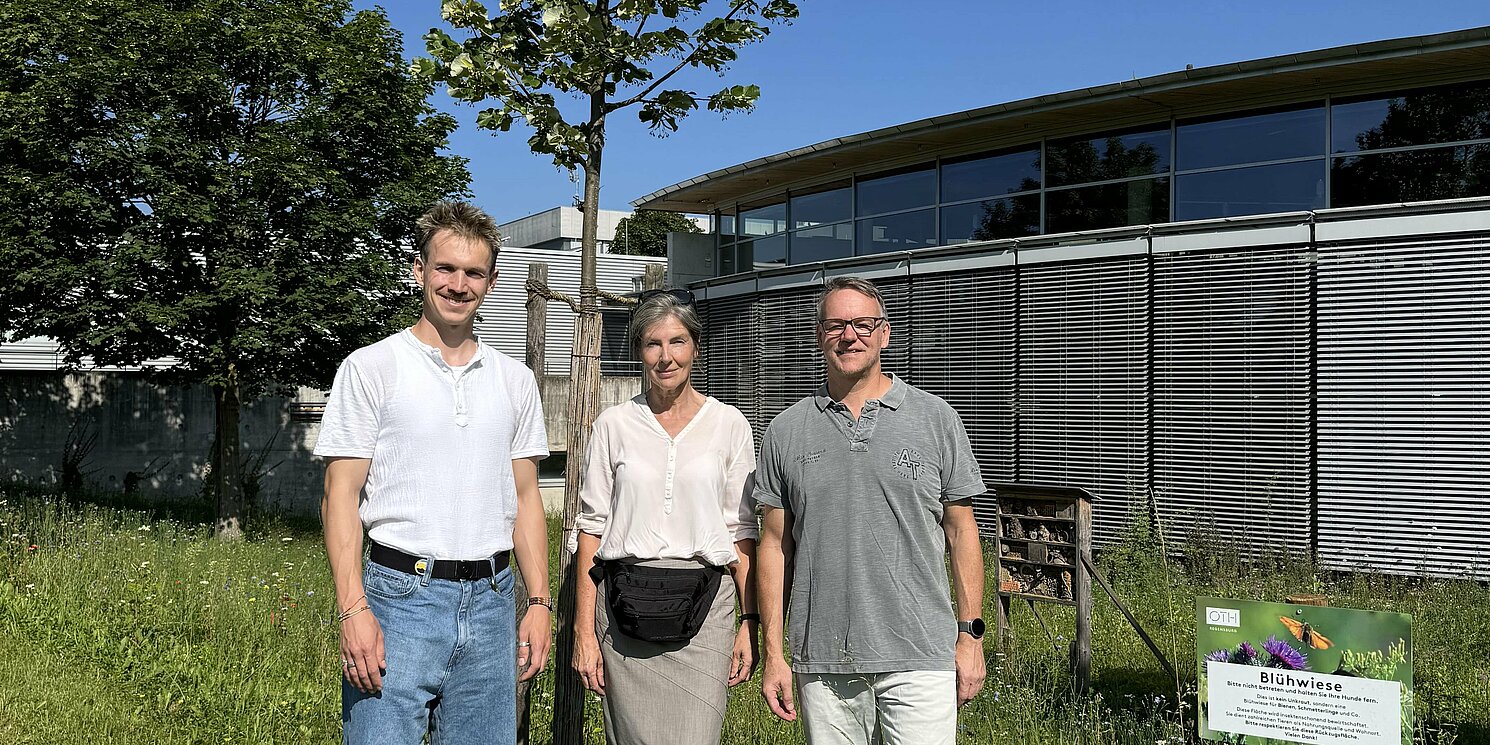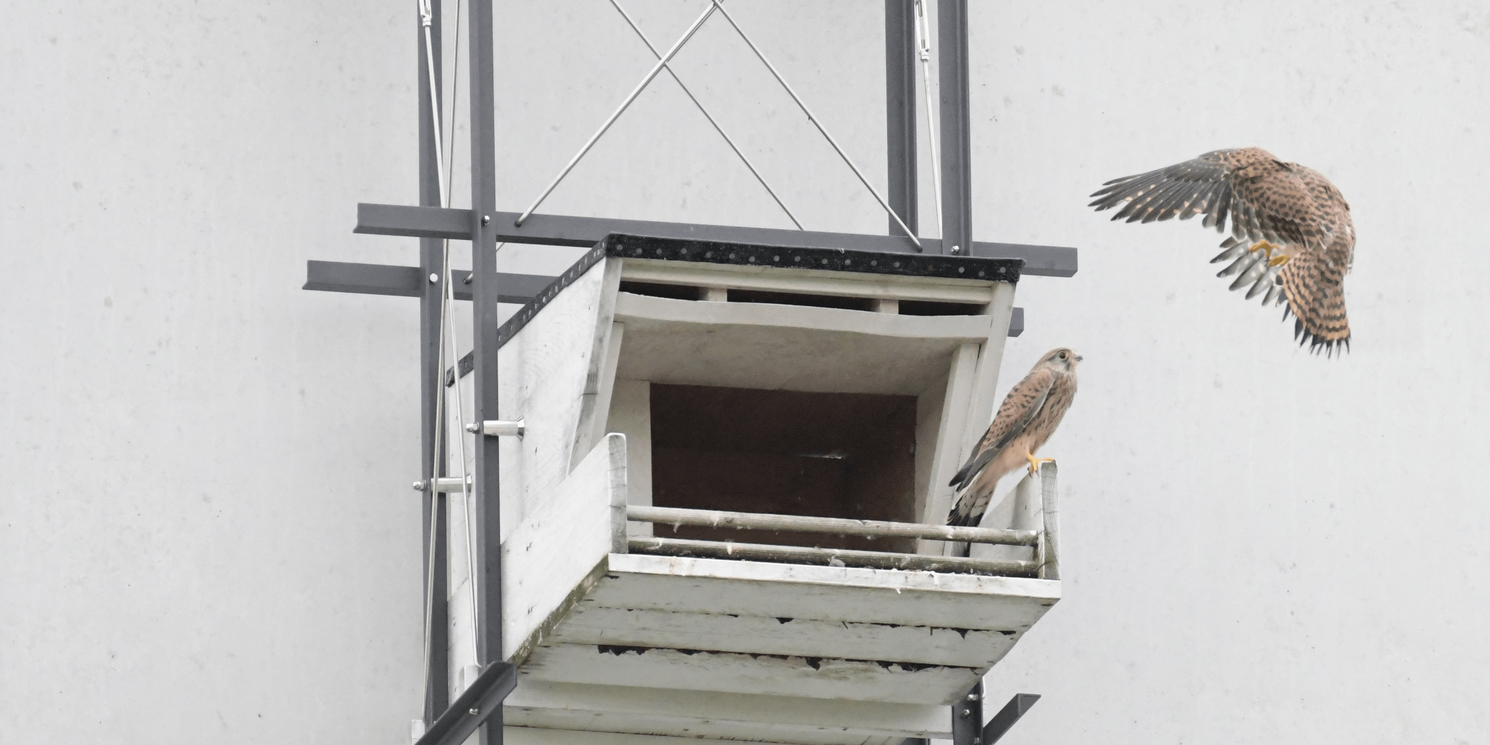In recent years, a number of successful measures have been implemented on the OTH Regensburg campus, which have significantly increased the biodiversity, but have also contributed to the overall image of a greener campus.
Numerous insect species and other small animals find food and a habitat on around 2,200m² of flowering meadows. In addition to the deliberately sown flowering meadows, numerous smaller green areas are only mowed once or twice a year, thus achieving the same effect. Higher green spaces have a cooling effect and thus contribute to a positive local climate. In addition, insect hotels for wild bee species have been set up near the flowering meadows, providing a place for larvae rearing, among other things.
As part of a funding programme for greening measures on campus, numerous climbing plants and more than ten trees were planted in autumn 2023 and previously gravelled courtyards were converted into green spaces. The climbing plants, such as wild vine, jasmine and Bavarian kiwi, have now reached a height of one metre and will cover large areas of walls in a few years' time, providing a habitat for numerous animals and having a positive impact on the local climate.
Around 90 per cent of the 40 nesting boxes on the university campus are occupied by breeding birds such as sparrows, tits and great spotted woodpeckers. One particular highlight is a pair of kestrels that have successfully bred and raised their young in the nesting box on the administration building for the third year in a row. In addition to the flowering meadows, year-round feeding stations support the birds in their search for food. To prevent possible collisions between birds and glass surfaces, appropriate strips and patterns have been applied to panes in several places, which have already been recognised as "bird-friendly glass structures" by the Landesbund für Vogel- und Naturschutz in Bayern e.V. (LBV).
The plan for the coming years is to convert gravelled courtyards and intermediate areas into green recreational areas with seating. Designs for this have been developed together with students over the past few months as part of teaching and elective events.

